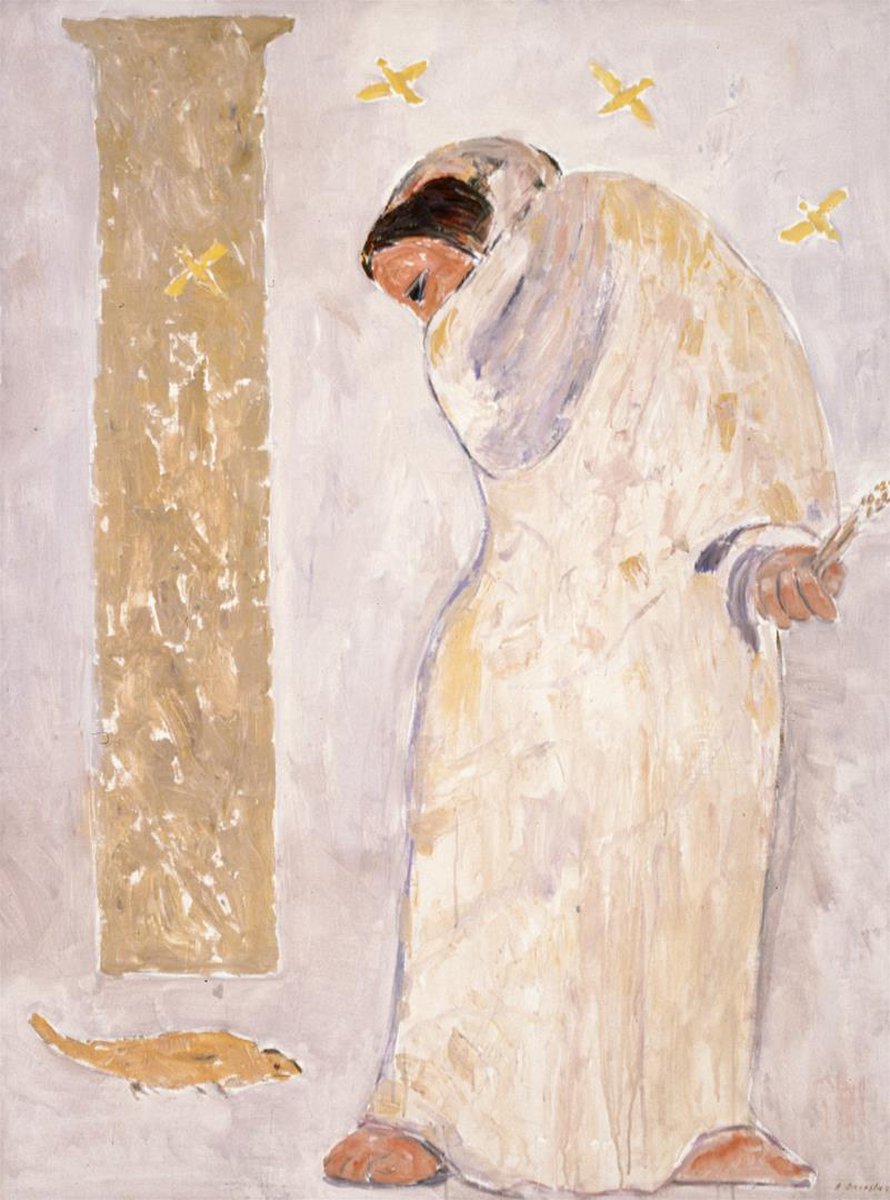As per the long-term loan protocol between Collection Caixa Geral de Depósitos and the Museu da Presidência da República, we highlight Uma Romana em Évora, 1984, by António Dacosta. The work was recently displayed at Palácio de Belém, Sala do Conselho de Estado [Council of State Room], together with works belonging to the Manuel de Brito Collection and to the Centro de Arte Moderna Gulbenkian (CAM) Collection.
Uma Romana em Évora, 1984 was presented for the first time in the artist’s solo exhibition at Galeria Zen, Porto. The work is part of a 1983 set about the city of Évora, which includes Um Romano em Évora and Está calor em Évora. These are paintings “that back the symbolic and the spiritual, and reconcile the venerable with the mundane” (Tânia Saraiva). The painting Uma Romana em Évora combines, “the magnificence of an overwhelming white” (José Luís Porfírio) with a “solar, orphic” ochre (Bernardo Pinto de Almeida), “the rediscovery of mythology in everyday life, and the rediscovery of the infinite in the infinitesimal” (Rui Mário Gonçalves). The female figure Ceres holds an ear of wheat – a symbol of earth's fertility – as she faces a small lizard – a symbol of the profane. At this stage of his work, Dacosta's noteworthy narrative and creativity comes across in the symbolism of the figures and objects he depicts. The pictorial space – “drawing of a map of sorts” (Raquel Henriques da Silva) – is made into an open field of symbolic associations based on “internal logics of a personal mythology” (Fernando Rosa Dias), carried by the meanings of the objects and figures the painting is comprised of.
Born in Angra do Heroísmo, Azores, in 1914, he came to Lisbon in 1935 to study Painting at the Lisbon School of Fine Arts after attending the Escola Industrial e Comercial de Madeira Pinto, where he learned cabinet-making as his father’s assistant. His work progressed along two distinct stages and times. The beginning of his career, from 1938 to 1949, was strongly influenced by Surrealism, together with António Pedro, through “figurative painting with a dreamlike language characterized by dramatic content, occasionally violent, or by melancholic lyricism” (Adelaide Ginga). In the mid-1940s, his painting took him on a more lyrical and significant path. His overall success – Amadeo de Souza-Cardoso Prize in 1942 – took him to Paris on a grant from the French government in 1947. Having contacted the French surrealist group, his painting turned towards abstraction. On that same year he settled definitively in Paris abandoning painting and dedicating his life exclusively to journalism and art critique – Diário Popular (1943-47). He was a correspondent for Diário de Lisboa (1947-50) and for O Estado from São Paulo (1952-1978), also dedicating himself to poetry and illustration. By the end of the 70s, he resumed painting taking on a restrained and symbolist figuration: “some images would come to the fore, in their oddness, a never biased oddness” (Rui Mário Gonçalves). His paintings bring back few lyrical moments he had abandoned almost 30 years earlier, but they are inundated by a “mythical archipelago” (Júlio Pomar) and by a “suspended delay” (Fernando de Azevedo).
He was awarded the AICA Prize in 1984 and his work was presented at Centro de Arte Moderna Gulbenkian (CAM) and at Casa de Serralves. In 1989 he was honoured with the Order of Merit Grand Cross (GCM) by President Mário Soares.
Hugo Dinis


